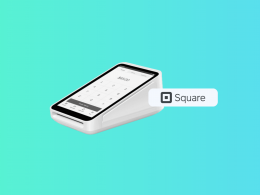The cost of goods sold (COGS) is a term used to describe the total costs associated with selling a product or service. It is one of the most critical financial metrics of any business. Though COGS associates with spending, it might sometimes be not considered an expense but rather a reduction in the inventory on hand value. So, it might be hard to figure out how to account for it and track it.
This article will explore the cost of goods sold, its importance, and how businesses can best track it for accurate financial reporting.
Why is the cost of goods sold important?
The cost of goods sold is one of the key metrics for a business that sheds light on business performance, particularly profitability. The cost of goods sold is important for several reasons:
1. It helps calculate the gross profit of a business.
The cost of goods sold is subtracted from the revenue generated by the sale of those goods to determine the gross profit. This metric is essential because it provides insight into a company’s core profitability before other expenses, such as overheads, are considered.
2. It helps in determining the price of goods and services.
By understanding the cost of goods sold, businesses can set prices that cover their expenses and still make a profit. Without knowing the COGS, it’s highly likely to set prices too high or too low, leading to losses or missed sales opportunities.
3. It helps in financial reporting.
The cost of goods sold is a crucial figure used in financial reporting to calculate a business’s net income that helps assess profitability and make wiser investment decisions.
4. It helps inventory management.
Knowing the cost of goods sold helps businesses manage inventory levels more effectively by predicting future demand based on past sales data. This information can help make informed decisions about when and how much inventory to reorder.
💡 Unlock the secrets of COGS accounting and streamline your expense management. Don’t wait – start tracking COGS efficiently with Synder today!
Is the cost of goods sold an expense or not?
The cost of goods sold (COGS) is considered an expense because it is directly related to the amount of money a company spends to acquire or produce the goods it sells. COGS represents the cost of the materials, labor, and overhead required to produce or acquire the goods that are sold during a given period.
Some voices, however, don’t consider the cost of goods sold an expense, but rather a reduction in the value of inventory on hand. This opinion might be based on the fact that when a business sells a product or service, the cost of goods sold is subtracted from the inventory on hand, resulting in a reduction in the value of the inventory. At this point, a confusion may occur about whether the COGS is an expense or not.
In accounting, however, the cost of goods sold is definitely an expense, as business spends this money to get the products to sell (or to be able to provide services). It appears in a company’s financial statements, particularly the income statement, under the revenue section. The COGS is deducted from the total revenue to arrive at the gross profit of the company.
The difference between the cost of goods sold and operational expenses
The cost of goods sold can often be confused with other types of a company’s expenses, such as operational expenses. See, both are expenses and appear in the income statement. Confusion arises about which belong to which type and how to differentiate between them.
To clarify, the cost of goods sold is the direct cost of producing or purchasing goods a company sells. In other words, if a business pays for something that helps acquire these products – it’ll be a part of the COGS. In the income statement, COGS appears (as mentioned above) as a deduction from revenue to calculate gross profit.
Operational expenses (OpEx) are the day-to-day costs of running a business. This way, OpEx comprises administrative expenses like rent, utilities, salaries, marketing, and taxes. Unlike COGS, OpEx appears in the income statement as a separate category below gross profit.
As you can see, the key difference between the two is that COGS is directly related to the production or acquisition of goods, while OpEx covers all other expenses required to operate a business aside from producing goods. Both are important, and companies might want to manage these costs to maintain profitability.
How do businesses track the cost of goods sold?
The key to successfully managing the COGS is to accurately record all the associated expenses in the books under the right category. This way, they’ll be able to track COGS for a specific period hassle-free.
Businesses can track the COGS using various methods such as:
- FIFO (first-in, first-out) – This method assumes that the first items purchased are the first ones sold.
- LIFO (last-in, first-out) – This method assumes that the last items purchased are the first ones sold.
- Average cost – This method calculates the average cost of all of the goods purchased during the period and is used to determine the COGS for each unit sold.
Businesses also need to keep track of inventory levels to calculate the cost of goods sold accurately. They can use different systems to manage their inventory, such as:
- Perpetual inventory system – This system continuously updates the company’s inventory levels, recording each time a product is added or sold.
- Periodic inventory system – This system calculates the cost of goods sold at the end of a specific period by subtracting the beginning inventory from the ending inventory, including any purchases made during that period.
By keeping accurate records of COGS, businesses can calculate their gross profit, which is their total revenue minus the COGS. This information is essential to understand their profitability and make informed decisions about pricing and inventory management.
Businesses often use accounting software to track their costs of goods sold. This software allows businesses to enter in all of their expenses and provides an easy way to view and analyze important financial metrics, such as cost of goods sold and other. Additionally, many accounting programs allow businesses to connect their bank accounts and credit cards to track their expenses more accurately.
Conclusion
The cost of goods sold is an important concept for businesses to understand and accurately track. This way, businesses can ensure that their books are balanced, their customers are charged appropriately, and their bottom line is healthy. Additionally, understanding the COGS is important for businesses to accurately report their financial information to investors and shareholders.
In this article, we’re just touching upon the topic of COGS. You can find more in-depth information on the matter in the suggested articles below:







.png)
